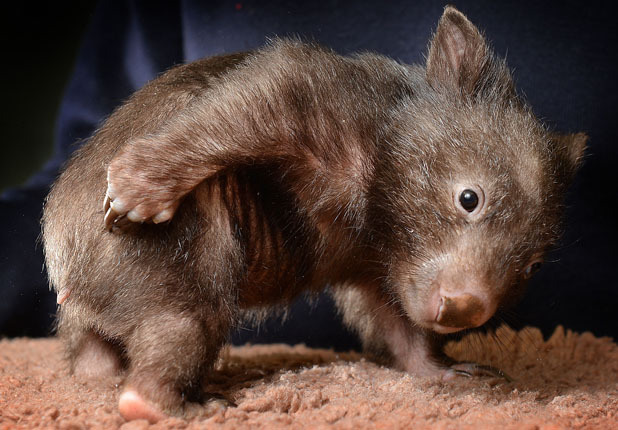
You may not be aware of these unique wombat facts I bring to you today, particularly if you live anywhere but Australia and on scattered islands nearby. Wombats are pudgy, short-legged, muscular mammals are approximately 3 feet (1 meter) in length, and weigh between 44 and 77 lb (20 and 35 kg). They have short, stubby tails. They walk on all four legs and are marsupials, meaning that they carry their young in their pouch. Wombats’ fur can vary from a sandy color to brown, or from grey to black.
Unique Wombat Facts – They poop in cubes
- Wombats are adaptable to their environment, and are found in forested, mountainous, and heathland areas of south-eastern Australia, including Tasmania, as well as an isolated patch of about 740 acres (300 hectares) in Epping Forest National Park in central Queensland.
- Wombats dig extensive burrow systems of tunnels and chambers with their rodent-like front teeth and powerful claws..
- Although mainly crepuscular and nocturnal, wombats also venture out to feed during the cool or overcast days.
- They are not commonly seen, but leave ample evidence of their passage, treating fences as minor inconveniences to be gone through or under, and leaving distinctive cubic faeces.
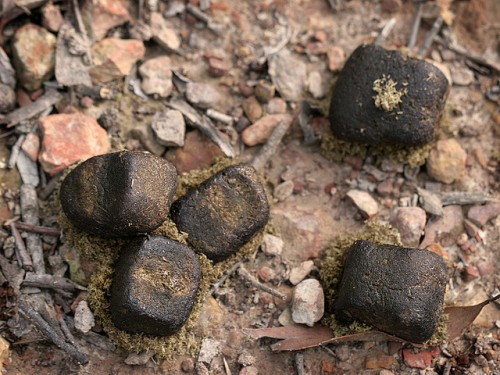
- Wombats are herbivores; their diets consist mostly of grasses, sedges, herbs, bark, and roots.
- Their incisor teeth somewhat resemble those of the placental rodents (rats, mice, etc.), adapted to gnaw tough vegetation.
- Female wombats give birth to a single, tiny, undeveloped young in the spring after a gestation period of generally 20–21 days.
- The young crawl into the pouches on their others’ bellies and stay there until they leave their pouches after about five to six months.
- Even after it leaves the pouch, the young animal will frequently crawl back in to nurse or to escape danger.
- Baby wombats can care for themselves at around seven months. Wombats are weaned after 15 months, and are sexually mature at 18 months.
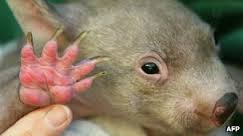
- Wombats pouches are uniquely backwards-facing so that when digging, the wombat does not gather soil in its pouch over its young.
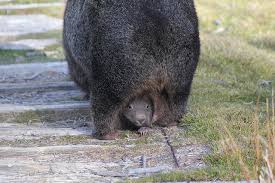
Unique Wombat Facts – Ecology and Behavior
- Wombats have an extraordinarily slow metabolism, taking around 8 to 14 days to complete digestion!
- They generally move slowly, but threatened, they can reach speeds of up to 25 mph (40 km/h) and maintain that speed for up to 90 seconds. WOW!
- Wombats will react aggressively to intruders in defending their home territories and burrows.
- The common wombat occupies a range of up to 57 acres (23 hectares), while the hairy-nosed species have much smaller ranges, of no more than 10 acres (4 hectares).
Unique Wombat Facts – Defense
- Wombats’ primary defense is their toughened rear hide, with most of the posterior made of cartilage. This, combined with its lack of a meaningful tail, makes it difficult for any predator that follows the wombat into its tunnel to bite and injure its target.
- When attacked, wombats dive into a nearby tunnel, using their rumps to block a pursuing attacker.
- A wombat may allow an intruder to force its head over the wombat’s back, and then use its powerful legs to crush the skull of the predator against the roof of the tunnel, or drive it off with two-legged kicks.
- If you should someday find yourself in front of an angry or threatened wombat, you might be wise to climb a tree until the wombat calms down and leaves.
- Wombats will bite humans and puncture human skin with their claws.
- A startled wombat can also charge humans and bowl them over, risking broken bones in the human.
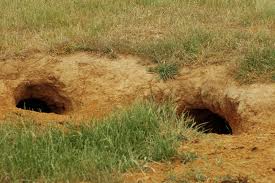
Unique Wombat Facts – Conservation
- The three living species of wombat all reside only in Australia, and are protected under Australian law.
- The northern hairy-nosed wombat is an endangered species.
- The biggest threats the species faces are its small population size, competition for food because of overgrazing by cattle and sheep, and disease.
- Dingos and Tasmanian devils prey on wombats.
- Wombats have been hunted and killed because of extensive damage caused by wombat burrowing, which can be a destructive nuisance to ranchers and farmers
- Wombats are also hunted for their fur and simply for sport.
Unique Wombat Facts – Wombat Day
- Since 2005, an unofficial holiday called Wombat Day has been observed on 22 October.
SOURCES: National Geographic and Wikipedia
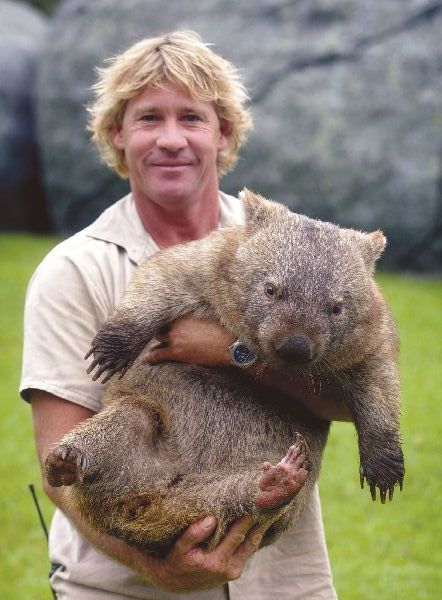
Latest posts by Jeanne Melanson (see all)
- Mindful Travel With Your Dog This Holiday Season - December 23, 2019
- A-Z of Australia’s Endangered Wildlife - December 20, 2019
- Teaching Your Kids How to Walk the Dog Safely - December 2, 2019

Wombats are soooo cute! I want one! Thanks Jeannie. The Birdman
I didn’t think any living thing could …you know…do the cube thing.LOLHow is that possible? These are some truly fascinating facts about the wombat.I like their cute little pouches and I am truly fascinated with Mother Nature all over again.
I didn’t really know a lot about the wombat,enjoyed reading this quite a bit.
If I had to choose a animal I like to see you cover,it would be a cheetah…
I can’t get past the cube thing. Australia has the most unique animals on the planet.
Oh wow, I didn’t know that they got that big! But they are sure cute when they are babies!
I loved reading these facts about these unique animals and seeing Steve holding one.